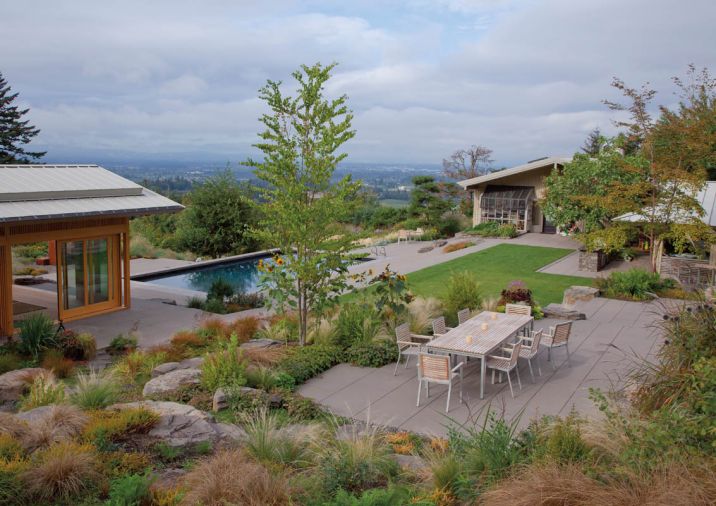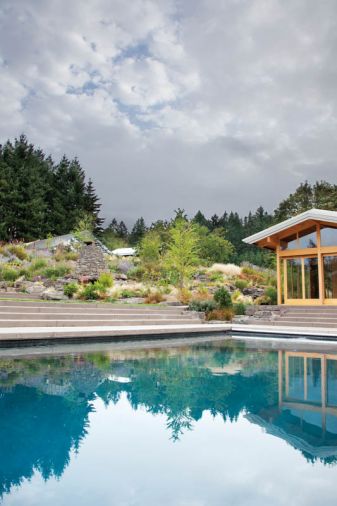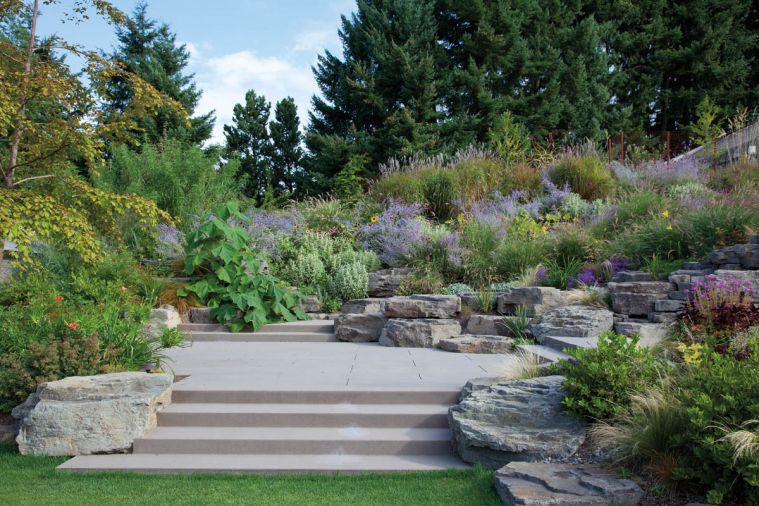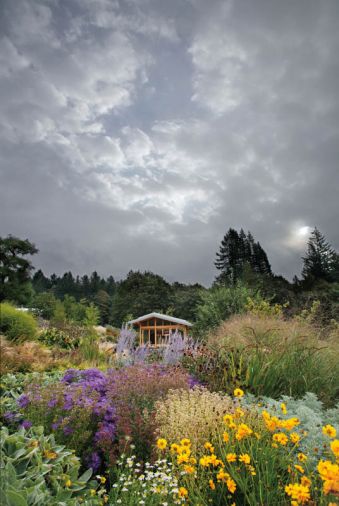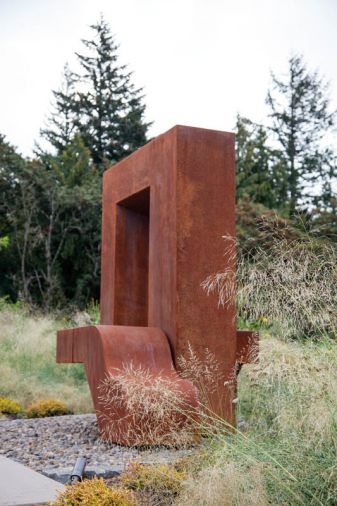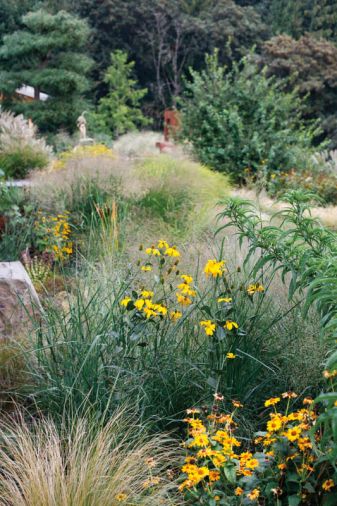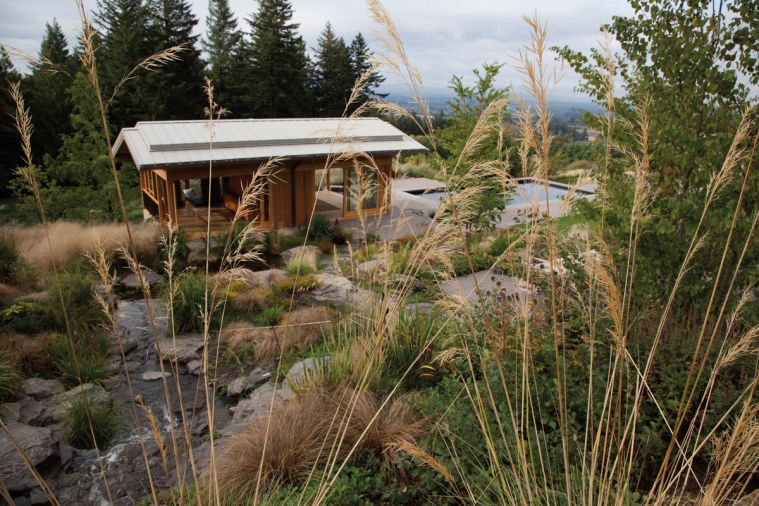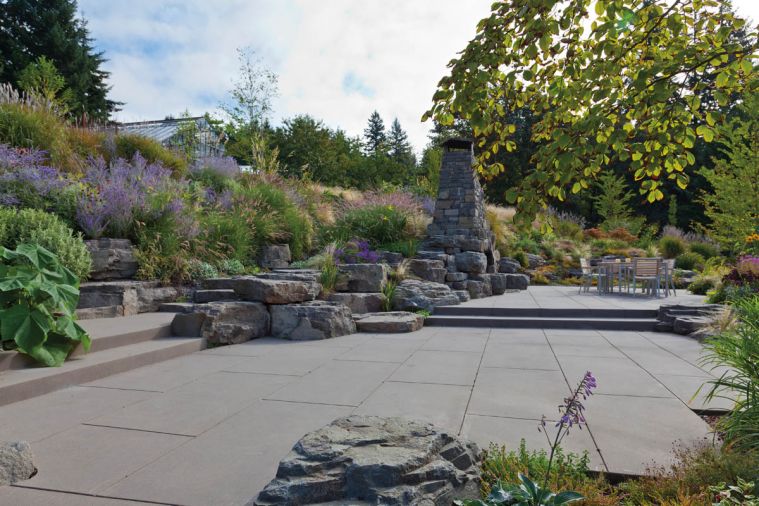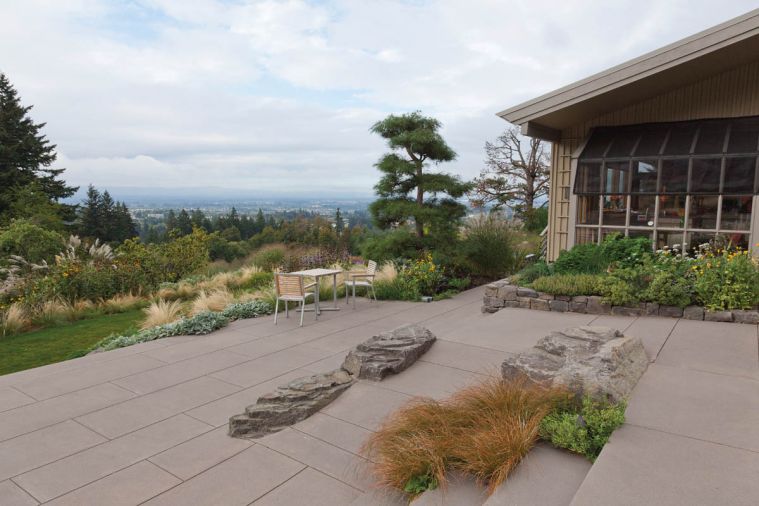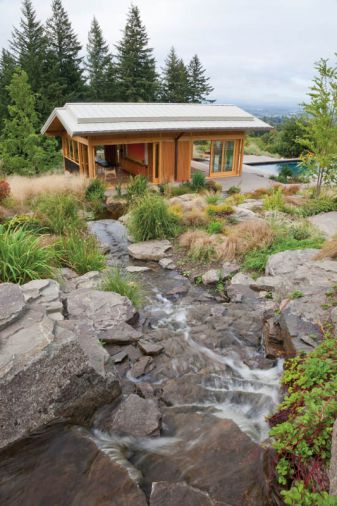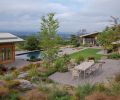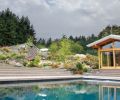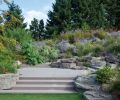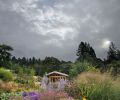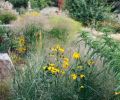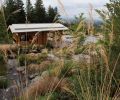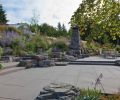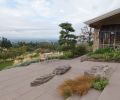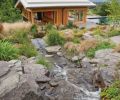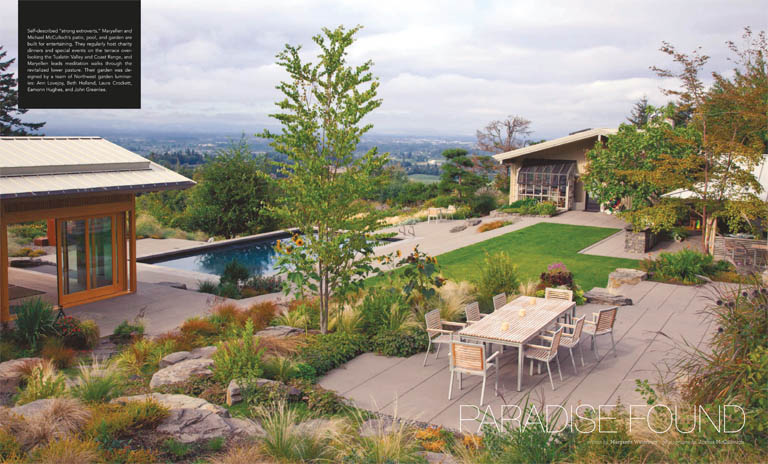Tucked away in the hills just west of Portland is a garden that masterfully bridges the wild and the refined. Blending midcentury modern architecture, contemporary hardscaping, naturalistic plantings, native forest, and a Japanese-inspired garden studio, the property exemplifies Northwest design. Once a virtually blank canvas, today Maryellen and Michael McCulloch’s historic home and expansive terraced garden play host to a rotating cast of children, family, friends, elk, birds, bear, bees, and recently even a slinking bobcat darting across the front road.
Maryellen, Michael, and their two of their four children have lived on the property together since 2004. Maryellen and her first husband purchased the land as a family home, but he passed away soon afterwards. It’s the site of an iconic single family home designed by Pietro Belluschi, one of the Northwest’s most famous architects and a national touchstone in the Modern movement.
Despite its elegance, living in a noteworthy property does come with limitations, particularly for creative residents. Michael is an architect and Maryellen is a musician and recording artist. They struggled to balance their desire to make a mark on the property with their obligation to preserve its historic quality. “We didn’t touch the house. The building is so significant and we didn’t want to mess anything up, so we went outside.”
In the beginning, outside consisted of a sheep pasture blanketed in thistles and several acres of persistent Himalayan blackberry. The McCullochs wondered: What would it be like to have the ideal situation for children to grow up in and adults to enjoy? How can this rural setting be transformed into a place for rejuvenation, entertaining, and gatherings while also preserving the natural qualities that make it so special? What kind of garden is this place meant to be?
To answer these questions, the McCullochs enlisted an all-star cast of Northwest garden designers, including Ann Lovejoy, Beth Holland, and Laura Crockett. Together, they chose a hot color palate incorporating reds, oranges, yellows, and deep purples, and then put together a planting scheme for a four-acre core around the home. Eamonn Hughes of Hughes’ Water Garden designed and installed the water feature adjacent to the garden studio, including individually placing all one thousand tons of rock brought in to the property.
Despite the significant hardscaping, including an outdoor pool and rockery garden around the water feature, movement-filled foliage and color-saturated blossoms make the garden feel soft and welcoming. “A formal garden can feel hard to be in,” says Maryellen. “I want the plants to be a central focus so people feel really comfortable in the setting. Now the garden is taking over the hardscape, which is what I want.”
Coreopsis, artemisia, Russian sage, penstemon, lamb’s ear, yucca, sedums, and a wide range of ornamental grasses all feature prominently in the landscape. The designers selected for tough, resilient plants that could coexist successfully with the native elk and deer without aggressive interventions, as well as habitat plants for birds and insects.
More recently, the McCullochs have partnered with John Greenlee, considered the international expert on grasses, to expand the garden’s reach. Taking a light-handed editorial approach, they’re now carving trails through the former sheep pasture and removing invasive plants like thistles so that guests can better enjoy the existing grasses.
The McCullochs also cultivate about four acres of organic lavender, which they use to distill essential oils and make lavender products. They particularly relish the opportunity the lavender presents to interact intimately with bees. “The nice thing about bees and lavender is that they’re incredible docile because they’re so drunk on the nectar” says Maryellen. “It makes it really easy for people to see that even though the bees are on the flowers, they can be just nudged off when you make a bouquet. It’s a great way to reduce the fear some people have around insects and being in nature.”
The naturalistic approach even extends to the buildings in the garden. As an architect, homeowner Michael McCulloch designed the garden studio to complement the house. It was built using Japanese temple construction techniques, which eschew nails in favor of a puzzle piece-like approach to building. Every component of the studio frame was laboriously prepared over a period of six months and then, in one day, assembled completely in place without a single nail. “On assembly day, they were so nervous,” says Maryellen, “but it went together perfectly.” Today, the studio is used for yoga, intimate gatherings, events, and concerts, when Maryellen slides open all four walls of the building to create a magical outdoor pavilion.
“My kids were one-and-a-half and two-and-a-half when their father passed away. To be able to raise them on this place that he once had a dream about – that we then made into our dream – feels really special,” says Maryellen. “When I swim in the pool and watch the swallows flying over, dipping into the pool for water, I think ‘don’t we live in paradise?’ This is a unique and special place on the planet. We feel like we got this huge blessing, and we have to honor it, we have to be the steward the land is asking for. It’s a responsibility to listen to the land like that, to understand that it wants you to do certain things to it and behave certain ways on it, but – other than being a parent – it’s the best responsibility I’ll ever have.”
PROJECT SOURCES
Architect: Michael McCulloch
Grassland Designer: Greenlee & Associates www.greenleeandassociates.com
Garden Designers: Ann Lovejoy, Beth Holland, Laura Crockett
Water Feature: Hughes Water Gardens www.hugheswatergardens.com

